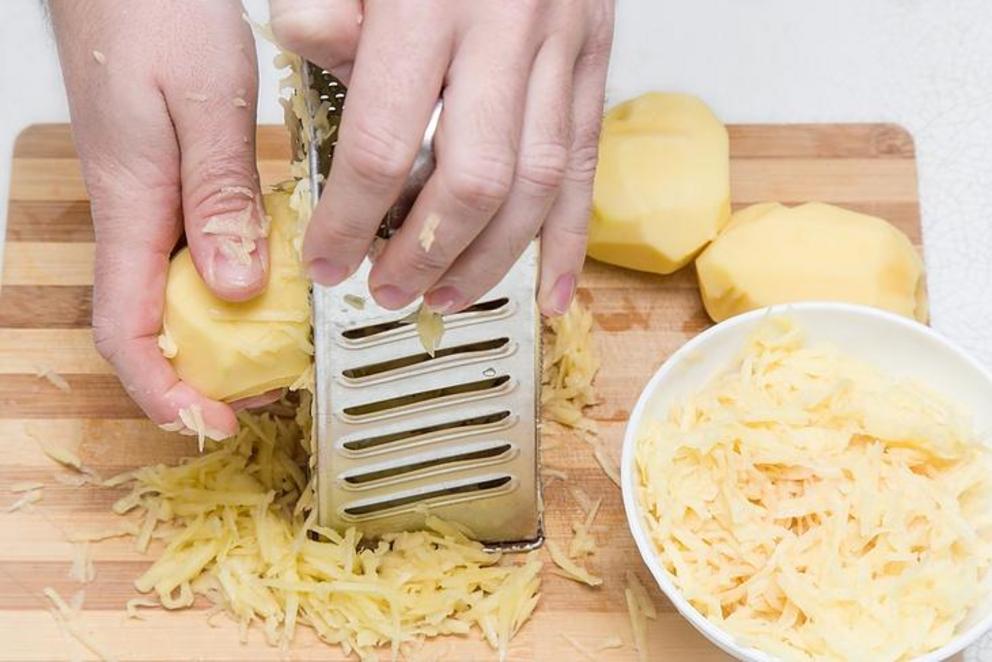How to draw out infection: simple home remedies that you need to know
Don’t you know that you can draw out infection with the use of common household food and items, like herbal tea bags, milk, and potatoes?
Well, I have learned about these simple remedies just recently when I tried to ask my grandmother on how to draw out infection from my boils naturally. Her reply, use poultices or warm compresses.
According to Georgia Department of Human Resources, the pus should be drained to speed up the healing process of infected wounds and boils.
After searching through various methods of drawing out infections online, I finally found the most potent remedies. To learn how to drain your infection, keep reading below.
How To Draw Out Infection: Simple Home Remedies That You Need To Know
What You’ll Need
For Warm Compresses
Water
The simple remedy for drawing out infection is a warm compress. You can do it by soaking a cloth or small towel with warm water. The heat can kill deep infections and even form the head of a boil when applied regularly.
For safety, always use clean water to avoid further complications.
Herbs (Optional)

To further enhance the healing process, you can boil some herbs to make a tea compress. Some of the best herbs that you add include ginger, usnea, and tea tree. You can use about 3 tablespoons of the herbs in every cup of boiling water.
Kettle
To boil your water from scratch, you need a good kettle. If you like to add some herbs, you can boil them with the water. Alternatively, you can use a saucepan or pot.
Washcloth
A clean cloth will be used to soak into warm water. You can use any washcloth you have available, but if you want comfort, make sure that you use cotton. Alternatively, you can use a small towel if you have no washcloth at home.
For Poultices
Option 1: Potato Poultice
Raw Potato
You need fresh, raw potato to be used as a poultice. You can tell that it’s fresh if the exterior is free from dark spots and they feel firm to the touch.
Never buy potatoes with a green tinge because it indicates the composition of toxic alkaloids. Also, avoid using a potato that has begun to sprout because it indicates old age.
Grater
To produce a mushy and soft potato poultice, you need a good grater. What I use is a box grater to shred the potato with ease. If you have no box grater, any type of grater will do.
Paper Towel
The paper towel will be used to place the shredded potato securely. You need about two small squares of paper towels to sandwich the shredded potato perfectly. Alternatively, you can use a thin cloth if you have no paper towel.
Plastic Wrap
The plastic wrap will keep the poultice securely in place to the infected area. You don’t need a lot of plastic wrap, just a little will do. Two of the best plastic wraps that you can use are saran wrap and glad wrap.
Bandage
After the plastic wrap, you need to finish it off with a bandage to secure the poultice well. To make sure that the bandage doesn’t fall off easily, choose a self-adhesive design, like this one.
Option 2: Bread And Milk Poultice
Bread
You can use any type of bread- white, brown, or even stale. In fact, stale bread is even better because you can make use of it instead of throwing it away. Depending on the size of your infected wound, one piece of sliced bread is enough to cover a single treatment.
Milk
The milk will be used to soak the bread. There’s no specific type of milk that you can use so any kind will do. Before you soak your bread with it, make sure it’s warm.
Bowl
You need a medium-sized bowl to serve as a container for your bread while soaking with warm milk. Any type of bowl will do, but a shallow one can be preferable so you can place your hands easily.
Gauze
To keep the poultice secure on the infected area, you need to cover the poultice with a gauze. Chose an open-weave design to provide great cushion and superior absorbency, like this one.
You may find some more poultice recipes here.
Step-By-Step Instructions
How To Draw Out Infection With A Warm Compress
1. Boil Some Water
To start from scratch, boil some clean water in a kettle. At this point, you can add some herbs to make the water infusion more potent. Let it sit for about 10 minutes or so make the temperature not scalding hot.
If you have warm water on your thermos already, you can skip this step and proceed to step 2 directly.
2. Wet The Washcloth
With a clean washcloth or small towel, wet it with warm water. The temperature of the water should be not too hot because you might end with burns on top of your infected wounds or boils.
If you’re dealing with a small infection, you can wet a small part of the washcloth, just enough to cover the infected area.
3. Apply To The Infected Area
Apply the warm compress on the infected part several times of the day. You need to let the warm compress stay on the infected area for about 10-15 minutes. This will help make the head of the boil become prominent, enough to burst naturally.
How To Draw Out Infection With Poultices
Option 1: Potato Poultice
1. Grate The Potato

To begin making the potato poultice, grate the raw potato using a box grater. You can keep the skin intact if it’s free from dark spots. Shred the potato like you’re creating hash browns. The potato shreds should be soft and mushy.
Watch how the grating is done along with the rest of the steps in this video here.
2. Apply The Poultice To The Infected Area

After shredding the right amount of potato, transfer it to a small paper towel. Spread it well and cover it with another piece of paper towel to keep the poultice together. Now, you can apply the poultice to the infected area.
3. Secure Well
Secure the poultice by wrapping it with a plastic wrap. Make sure that you don’t wrap it too tight to prevent blood flow nor too loose to let the poultice fall. Next, follow it through with a bandage.
Option 2: Bread And Milk Poultice
1. Soak The Bread In Milk

In a bowl, place one slice of bread and pour it over with a little amount of warm milk just enough to moisten the bread. Let the bread soaked for about a minute. You can break the bread as well to create a paste. Watch how this specific method is done in this video here.
2. Apply On The Infection
After your bread and milk mixture has turned to a paste, pop some of it and apply it on the infection. You can secure the bread poultice on the infected area by wrapping it with a gauze. You can ask someone to do the wrapping for you.
Additional Tips From The Experts

1. Apply The Poultice Every 3-4 hours
According to Victoria First Aid, poultices should be changed every four hours or until the infection dries out fully. As for a tea or warm compress, apply it to a boil 10-15 minutes at 3-4 times daily.
A warm compress can be effective to ripen a boil. On the other hand, poultices contain natural components to help speed the healing process.
2. Never Pop A Boil
Everyday Health strongly discourages the popping of a boil by yourself because this can result to further infection. With the help of a warm compress, wait for the boil to develop the head and burst on its own.
When the boil has finally burst, wash it with soap, and apply the infected area with an antibacterial gel.
3. Consult A Doctor If The Infection Is Not Cleared
Kids Health Organization recommends consulting a doctor if your infection doesn’t heal within two weeks.
With the help of warm compress and poultice, your infection should clear up in a matter of days, but if not, then make an appointment with your physician, especially if you’re also suffering from fever. If a boil has worsened quickly or has become extremely painful, see your doctor.
Final Thought
Did you get a lot of information regarding the ways on how to draw out infection properly? Thanks to this article, I can already have a cheaper option to treat infections, especially boils. With a hot compress and poultice, you can save on medical costs.
However, if the infection has not healed within two weeks already, it is best to check the doctor already.
For full references please use source link below.

